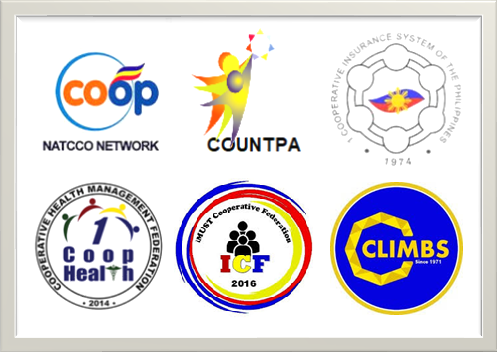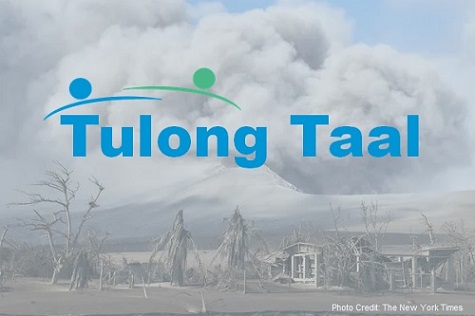Affiliations


HPP has partnered with DXC Inspire in its donation drive for the victims of the Taal Volcano eruption. On January 19, 2020, Inspire volunteers led by Marj Encarnacion, were able to bring relief goods to Taal victims in Lipa, Batangas and Alfonso, Cavite. Through DXC Inspire, HPP was able to donate a total of P55,000.00 to the much needed relief effort and feeding program.
"We would like to thank Inspire for allowing us to be part of this worthy cause", said Kathryn Salangsang-Garcia, HPPEMC Chairperson. "And we look forward to future partnerships where we can be of help in the community", Salangsang-Garcia added.

HPPEMC has luanched Tulong Taal, a call for donations for the victims of the recent Taal Volcano eruption. Donations may be deposited directly to the coop office or via the HPP Mart Online. Members who haven't spent their HPP Christmas Gift Coupons yet may donate them to Taal victims. They just need to go to HPP Mart Online --> Charity --> Tulong Taal and enter their coupon code upon checkout.

On behalf of the Board of Directors and Officers of HPP Employees Multipurpose Cooperative, I wish you all a very Merry Christmas and a Prosperous New Year!
As we head towards the end of 2019 and into the new year, let’s take a quick look back at what we have accomplished. 2019 has been quite a year for all of us at HPP Coop. For one, we will be ending the year with more than P60M in Asset in just 5 years of operation, making us one of the most admired cooperatives in the country!
For that, I would like to thank all the officers and volunteers who gave their time and talent to help bring us where we are today. Thank you for all your contributions the past year and for always striving to put the interest of the members above your own.
Of course, we would like to thank all the members for their support and patronage. Thank you for believing in the Cooperative. You inspire us to go on.
Here are some of what we have accomplished this year.
Those are just some of the things we’ve accomplished this year. And with our elevation to multipurpose cooperative status, coupled with your continued patronage, our momentum will surely continue in 2020 and beyond.
Thank you and once again, Merry Christmas and a Happy New Year to everyone!
Yours in the spirit of cooperation,
Val Hilario

In its desire to somehow alleviate the effects of the recent eruption of Taal Volcano, the HPP Board has approved to offer INTEREST-FREE loans to members who have been severely affected by the calamity.
Loan Type: Taal Loan
Loan Amount: P20,000.00
Term: 12 months
Interest Rate: 0%
HPPEMC CEO Val Hilario said that many members have been affected by the recent eruption of Taal Volcano and that the Coop is here to help.
"Our Cooperative exists precsely to help members in times of need. I know many of our members have been affected by the recent eruption of Taal volcano and we're glad to inform everyone that HPPEMC is now ready to extend financial assistance to those who were directly afftected," Hilario said.
"We understand that P20k may not be enough for some but it should be a big help in times like this. Other loan products are available if needed Members just need to let us know that their loan application is due to the Taal emergency and we'll make sure to expedite the process," Hilario added. The special Taal Loan may be used for house repairs, ash fall cleanup, and others.
Members may contact the coop office at This email address is being protected from spambots. You need JavaScript enabled to view it. for more information.
 The HPP Employees Multipurpose Cooperative has launched its own herbal coffee brand, DxCoffee Plus, aimed at providing members with a healthy alternative. Given the sedentary nature of most of our members' jobs, HPP is looking for ways to not only help with members' financial needs but also to promote their overall well-being.
The HPP Employees Multipurpose Cooperative has launched its own herbal coffee brand, DxCoffee Plus, aimed at providing members with a healthy alternative. Given the sedentary nature of most of our members' jobs, HPP is looking for ways to not only help with members' financial needs but also to promote their overall well-being.
Exclusively available at the HPP Mart Online shop, members can get DxCoffee Plus at a discounted price of just P130.00 for a box of 10 sachets.
DxCoffee Plus is a 5-in-1 coffee blend with the following active ingredients:
STEVIA is a natural sweetener herbal plant that has been proven to provide many health benefits including lower blood pressure, diabetes control, weight loss, cancer prevention, lower cholesterol levels, oral health, skin care, and osteoporosis prevention. Stevia contains zero calories, zero cholesterol, zero sugar, and has zero glycemic index.
GLUTHATHIONE is an extremely powerful antioxidant used by the body to protect against cellular and tissue damage. Boosting glutathione is said to help in the treatment of cancers, liver diseases, and memory loss, among others.
MALUNGGAY or moringa leaves is a miracle vegetable rich in many important nutrients, including protein, vitamin B6, vitamin C, riboflavin and iron. It helps to lower blood sugar levels, has anti-inflammatory properties, strengthens the immune system, and lowers cholesterol levels.
Page 24 of 31
